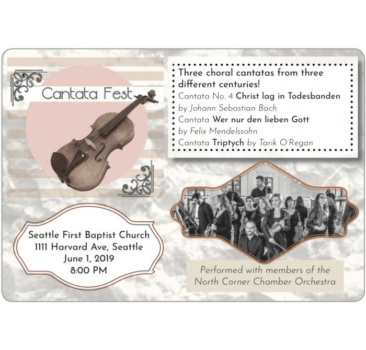Program Guide
Cantata Fest will include these three historic choral cantatas:
- Cantata No. 4 “Christ lag in Todesbanden” (Christ lay in the bonds of death)
by Johann Sebastian Bach (1685-1750) - Cantata “Wer nur den lieben Gott lässt walten” (He who allows dear God to rule him)
by Felix Mendelssohn (1809-1847) - Cantata “Triptych”
by Tarik O’Regan (b. 1978)

Introduction
A remarkable person entered the world of music in 1685—Johann Sebastian Bach. Most people today know him as an extraordinary composer, but in his own time he was also a renowned performer, respected by outstanding musicians such as Georg Frideric Handel, an exacting and insightful teacher especially of composition, a sought-after consultant on organ construction, and a student of theology and Luther’s teachings. Formidable as this description sounds, though, Bach was also an attentive and affectionate husband and a devoted father to his 20 children. Born in the hillside town of Eisenach in Thuringia, Germany, into a family of musicians, Sebastian (as he was called) far exceeded his forebears, relatives, and four musical sons in the quality and quantity of the music he wrote.
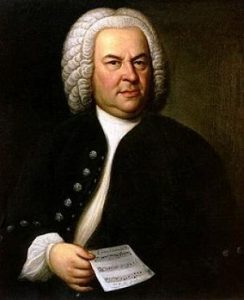
Bach spent most of his life composing and performing music for Lutheran churches in Germany. He began at age 18 as an organist in Arnstadt, moved to Mühlhausen three years later, then quickly received an appointment as Court Organist and eventually Concertmaster to the Duke of Weimar (1707-1717). After a period in a secular court appointment in Cöthen (1717-1723), he assumed the position of Cantor (music director) at St. Thomas Church in the large city of Leipzig in Saxony, Germany. As Thomaskantor, Bach was also responsible for music at the three other principal churches in the city as well as at the town’s civic events and Leipzig University’s celebrations. He was also obligated to teach Latin and catechism to the students at the school of St. Thomas Church. The younger boys of the Thomasschule, whom Bach trained, sang the treble parts in the cantatas, motets, and Mass settings that Bach composed for the services there; older students and men of the various congregations sang the tenor and bass parts. Bach’s Leipzig career continued until he died in 1750.
Background information on Cantata No. 4
During his 41 years as a church musician, Bach wrote an enormous amount of sacred music, a large portion of it as cantatas. In his time, the sacred cantata for the Lutheran Church was changing from an earlier motet style or vocal concerto to a kind of mini-oratorio consisting of recitatives, arias, choruses, and chorales (hymns). Composed around the topic of the day in the church calendar, the cantata reinforced the message of the scripture for the day and supplemented the pastor’s teaching. Bach wrote cantatas while at each of his church appointments. By far the greatest number come from his time in Leipzig, where he wrote a cantata for the Sunday services (and some major church holidays) every week for at least four years. More than 200 of his cantatas (reckoned as about 60% of the estimated total for his career) are extant today.
The text of a cantata was usually the work of a librettist interested in sacred poetry, who would interweave the day’s scriptural passages or hymn texts with his own new meditative passages (to be set as arias). Organ and other instruments provided an accompaniment suitable for the vocal performing group and appropriate to the tenor of the ecclesiastical season. The cantata, taking from about 20 to 30 minutes to perform, would be a part of the Sunday service. Almost every cantata Bach wrote concluded with a chorale (hymn) verse set in four-part harmony in such a way that the congregation would be able to join in singing at least the melody.
Genesis and early performances of Cantata No. 4
Cantata No. 4, Christ lag in Todesbanden (Christ Lay in the Bonds of Death) is unique among Bach’s works. It is a seven-movement setting of the Lutheran chorale of the same name, preceded by a short instrumental introduction, or sinfonia. Because all movements contain the chorale melody and text, this cantata is termed a chorale cantata; it is the only one of its type that Bach wrote, although in several of his other cantatas he used chorale text and/or melody in a number of movements.
According to recent studies, Bach composed his Cantata No. 4 for Easter, 1707, while he was at Mühlhausen. The scoring was for a 4-part chorus consisting of sopranos, altos, tenors, and basses (SATB) and an instrumental accompaniment of two violins, two violas, and continuo (most likely organ and cello). Nearly two decades later, as the newly-appointed cantor of St. Thomas Church in Leipzig, he had the parts recopied in preparation for performance, possibly with some revisions in the process. Watermarks in the paper and the handwriting indicate the date of the new scores to be 1724. In the following year, copyists wrote out new parts for cornetto (a leather-wrapped wooden instrument held vertically, with finger holes like a recorder but a trumpet-like mouthpiece) and three trombones, which doubled the voices. It is certain only that the cantata was performed at the church at Leipzig University on Easter Day in 1724 and 1725.
Bach As a Theologian
Brought up in the Lutheran faith, Bach studied both the Bible and the writings of Martin Luther, which include not only translation of the scriptures from Latin, Greek and Aramaic into German, but also extensive commentary on both scripture and liturgy. Bach was so familiar with these resources and so deeply responsive to them that he annotated the margins of his personal Bible with his own insightful comments. The more we study Bach’s music, the clearer it is that in setting sacred text to music Bach was composing as a theologian, expressing the religious thought and meanings of the words with musical imagery.
Luther’s Chorale
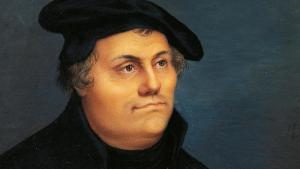
Martin Luther wrote seven verses in this chorale. The number is important in several ways. It reflects the week-long feast of unleavened bread. It is symbolically a combination of three (the divine Trinity) and four (representing humanity). Luther structured the seven verses of the chorale text symmetrically, using the fourth verse as the midpoint; the contents of verses on one side of the midpoint are mirrored in introversion on the other side, forming what is known as chiasm—a cross relationship. Luther used this last feature as a way to show a spiritual meaning and set up connections between sets of theological ideas.
Hearing Bach’s Music for Cantata No. 4
Here are some observations on the remarkable way in which Bach makes the chorale text live through music by looking at each movement in order. However, because part or all of the melody of the chorale “Christ lag in Todesbanden” is present in some way in each and every movement of Bach’s Cantata No. 4, it is very important for the listener to be familiar with that tune. The Lutheran congregation in Bach’s churches would already have known this hymn and may even have joined in singing Verse Seven at the end of the cantata. Today, this great work is performed for a very diverse public not steeped in Lutheran tradition. Hearing the cantata through from the beginning, the listener will likely become aware of more nuances of the way Bach conveys the meaning of the text through the music.
Sinfonia (Instrumental)
The opening Sinfonia poignantly suggests dark and sorrowful things: mankind’s dire straits before deliverance, the horrendous suffering of one executed by crucifixion, the desolation of those looking on at the crucifixion, the grief of those who removed Jesus’s body from the cross and buried him. On a personal note, although I had sung this cantata many times years ago as a college student, I never perceived the Sinfonia at that time to be other than an abstract reminder of the opening of the chorale melody. Now, however, I think perhaps Bach was using it to set the stage for us—taking us, maybe as actual observers, to the crucifixion, the deposition from the cross, perhaps even Jesus’ burial. In this brief instrumental introduction, Bach surely reaches out to us and attempts to move us with passionate music.
In the last five measures of this short Sinfonia, Bach shows us the elevation of the victim to the cross, the loneliness of his death agony, his deposition from the cross, and even his being set into a resting place—a burial. The final chord is not minor but major, a “Picardy third”, which is surprisingly peaceful. Whether the peace is the repose of death or a glimpse of hopefulness may become clear later.
Verse One (SATB chorus)
German text
Christ lag in Todesbanden, für unsre Sünd gegeben.
Er ist wieder erstanden und hat uns bracht das Leben.
Des wir sollen fröhlich sein, Gott loben und ihm dankbar sein
und singen Hallelujah. Hallelujah!
English text
Christ lay in Death’s bonds, given for our sins.
He has risen again and has brought us life.
So we shall be joyful, praise God and be thankful to him,
and sing hallelujah. Hallelujah!
The interpretation of the Sinfonia that begins this cantata may seem farfetched when we look at it as an isolated movement. However, the Sinfonia is not truly isolated. It must be perceived as a kind of prolog, contextually linked to what follows immediately, which is the first chorale verse. Bach opens this verse with a single sound: the sopranos’ first note and word of the chorale. This first unwavering vocal note has only a skeletal bass line against it and seems interminable. The remaining voices enter one by one after a beat and a half, and the strings enter after an entire measure; the sopranos still hold the first note even through the second measure as well before going on with the next note of the melody!
In a way, the sopranos’ augmentation (lengthening) of the choral melody’s notes suggests a lethargy, a stupor that reminds us of lifelessness. Yet, the melody’s lifelessness is not the whole story. As the verse progresses to the second line and the text mentions the words “arisen” and “life”, and the soprano continues its stupefied augmentation, the other voices and instruments become increasingly active. On the world Leben (“life”) the lower three voices are rhythmically much more active. The following text refers to the joy with which we praise God for deliverance, and here sixteenth notes abound in all voices. Finally, the sopranos leave their augmentation, and the word of rejoicing, “hallelujah”, is presented at a fast tempo marked Alla breve. We have been shown the return to life in the music.
Verse Two (Sopranos and Altos)
German text
Den Tod niemand zwingen kunnt bei allen Menschenkindern,
Das macht’ alles unsre Sünd, kein Unschuld war zu finden.
Davon kam der Tod so bald und nahm über uns Gewalt, hielt uns
in seinem Reich gefangen. Hallelujah!
English text
Among all the children of mortals, no one could conquer Death;
Our sin did all this; there was no innocence to be found.
Therefore Death came so suddenly and took power over us,
held us captive in his kingdom. Hallelujah!
If Bach were a jazz musician he might have invented “stride” piano style. In this verse the continuo has a marvelous walking bass which stalks so inexorably that it must be Bach’s analogy to Death. Over this, the sopranos and altos writhe and clash in a description of sin. They often engage in tight dissonances. The struggle to remember the chorale tune: at the beginning it’s broken into small figures like those in the Sinfonia, and elsewhere it is stretched out of shape. The brokenness of the human soul is thus clearly exemplified. The two voice parts are disjunct, beginning separately, then interweaving, and matching only at the ends of phrases. The voices try to break free but can’t. Even the Hallelujah is in chains (of suspensions).
Verse Three (Tenors)
German text
Jesus Christus, Gottes Sohn, an unser Statt ist kommen,
Und hat die Sünde weggetan, damit dem Tod genommen
All sein Recht und sein Gewalt, da bleibet nichts denn Tods Gestalt,
den Stachl hat er verloren. Hallelujah!
English text
Jesus Christ, God’s son, has come in our place
And done away with sins, and with that took away
All Death’s rights and its power; so nothing remains other than Death’s image,
Death has lost its thorn. Hallelujah!
The brilliant violin solo that begins the third verse suggests the confident vigor of a hero such as those in the old classic adventure movies, coming to save the damsel in distress. Bach’s choice of the bright tenor voice to sing the chorale verse encourages us to imagine a parallel to operatic high male voices performing the role of the grand hero. The combination of swashbuckling violin (an instrument on which Bach was a master) and bold tenor voice suggests the heroic nature of the savior; we seem to have entered a kind of sacred mini-opera here. The driving violin melody line is almost incessant throughout the movement, while the tenor’s half lines are separated with brief interruption.
A marvelous change in the texture and pace occurs at the third line of the text, in which we learn that Death has lost all its “rights and power; so nothing remains other than Death’s image”. As the tenor begins singing this text, the violin actually comes to a halt in a double-stopped unison with both the tenor note and the continuo bass. Then, as both voice and continuo forge ahead, the violin drops out entirely for a beat. This brief hiatus in the pattern marks the beginning of the passage that gives a new understanding of Death. The violin resumes its activity again for a very short passage. Then, at the end of the word “power” (Gewalt) it changes from its energetic sixteenth-note cascade to hammer-like double-, triple-, and quadruple-stop chords. At the same time, the continuo bass takes over the sixteenth-note pattern, driving downward through a breathtaking octave and a half. Meanwhile, the tenor has just completed the phrase “da bleibet nichts” –“so nothing remains”. In this very moment there is a space of silence—nothing—in the music.
Then, another surprise: an Adagio marking while the tenor sings the rest of the phrase, “denn Tods Gestalt” –“than Death’s image”. The word Tods is held out while the violin provides a cruciform descant above (b’ up to d’’, crossing down to a#’ and back to b’), and then the tenor echoes it as an ornament to finish the word. With the cessation of activity in the Adagio passage, the power of Death has insinuated itself into the movement, but with its energy much drained. At the last syllable of “Gestalt” (“image”) the tempo changes again to Allegro and the violin resumes its virtuoso activity at the marked forte dynamic. Life returns to the music, joyfully reminding that Death has lost its thorn or sting. The Hallelujahs are vivacious and ornate in violin, voice, and continuo, as if our swashbuckling hero is merrily outduelling his fearsome opponent.
Verse Four (SATB chorus)
German text
Es war ein wunderlicher Krieg, da Tod und Leben rungen,
Das Leben behielt den Sieg, es hat den Tod verschlungen.
Die Schrift hat verkündiget das, wie ein Tod den andern frass,
ein Spott aus dem Tod ist worden. Hallelujah!
English text
It was an astonishing war, when Death and Life struggled.
Life secured the victory, it has swallowed up Death.
Scripture had proclaimed this, how one Death gobbled up another,
A mockery has been made of Death. Hallelujah!
The central fourth verse is the great battle between Death and Life, cast as a fugal chorale prelude or a chorale fantasy. In the midst of the fray the great chorale melody holds constant in longer notes in the alto part, a kind of internal anchor. The settings of the first two lines are identical in this verse. In the third and fourth, however, Bach includes some vivid word painting. At the passage “ein Tod den andern frass”—“one Death gobbled up another”—he has the voices in canon literally bringing an end to themselves, like an early 18th-century Pac Man. Incidently, the German word frass is used when non-humans eat, so the translation as “gobble up” is apt. In the next phrase, “ein Spott aus dem Tod ist worden”—“a mockery has been made of Death”—Bach has all the voices hurl ridicule (Spott) at Death. The Hallelujah passage appears to sit down gradually, looking in all directions first so as to be assured that all is in order; it comes to rest by approaching the cadence not once but twice. The Picardy third which makes the final chord major seems to be an ultimate statement of satisfaction at the great victory.
Verse Five (Basses)
German text
Hier ist das rechte Osterlamm, davon Gott hat geboten,
Das ist hoch an des Kreuzes Stamm in heisser Lieb gebraten,
Das Blut zeichnet unsre Tür, das halt der Glaub dem Tode für,
der Würger kann uns nicht mehr schaden. Hallelujah!
English text
Here is the true Easter lamb that God has presented,
That is roasted in ardent love high on the trunk of the cross.
The blood marks our door, faith holds it up against Death.
The Destroyer can harm us no more. Hallelujah!
As we pass the remarkable center of the cantata, the fourth-movement fulcrum of the cross-form Bach employed, we find reference to earlier movements. Verse five for basses balances the tenors of Verse three. But here Bach introduces a number of other symbols to call to mind the Paschal lamb and the feast of Passover. First of all, the triple meter and great solemnity of the movement have a parallel in the processional opening of the much later Cantata 140, Wachet auf, ruft uns die Stimme, in which the heavenly bridegroom approaches another kind of solemn and sacred feast—a wedding. The triple meter is one way in which Bach refers to Christ or the Trinity in his music. Second, the continuo bass begins with a special descending chromatic line: it is a traditional opening for a passacaglia, especially one related to sorrow and death, such as Dido’s lament in Purcell’s opera Dido and Aeneas (1689). In particular, Bach used it in the Crucifixus of his B-minor Mass during his Leipzig years. In this cantata, the descending continuo passage begins each line; its triple application in this verse is a further reference to Christ as this verse dwells on his sacrificial death.
A few passages of word painting are noteworthy. While singing the word “Kreuz”—“cross”—in the second line, the bass presents the cruciform melody (b, c#’, a#, c#’, b) that will appear so often in Bach’s other sacred works, notably the St. Matthew Passion. An echo of the “cross” occurs in the first violin part when the bass sings of “heisser Lieb”—“ardent love”, suggesting the immense love of Christ in giving himself to death for humanity on the cross. Bach fully harmonized the second line with the use of the four string parts, thereby giving this text a richness and warmth that reflects the meaning of the words. In the concluding portion, Bach incorporates a marvelous image of Death by placing it for the singer on a horrendously low pitch approached by a “killer” leap, in itself deadly, for it is an octave-displaced descending tritone (the “devil in music”). Finally, in the next phrase only a few measures later, Bach places the word “Würger”—“destroyer”—at the high end of the singers’s range, and held out for four measures. And you thought Bach had no sense of humor! By the way, “Würger” can be translated as “strangler”, which certainly could apply to this music if the singer isn’t careful.
Verse Six (Sopranos and Tenors)
German text
So feiern wir das hohe Fest mit Herzensfreud und Wonne,
Das uns der Herre [er]scheinen lässt, er ist selber die Sonne,
Der durch seiner Gnade Glanz erleuchtet unsre Herzen ganz,
Der Sünden Nacht ist verschwunden. Hallelujah!
English text
So we celebrate the high feast with joyful heart and ecstasy,
The Lord makes it present to us, he himself is the sun,
Who through the radiance of his grace completely illumines our hearts.
The night of sin has disappeared. Hallelujah!
Verse Six balances Verse Two and simultaneously is an inversion of its message. Verse Two is dark and dwells on the “night of sin”. Here in Verse Six all is light; the work of deliverance has been achieved. The believer celebrates the holy feast (the Eucharist, the Christian interpretation of the Passover) with great joyfulness, basking in the light of the Lord. Its duet mirrors the duet of Verse Two, even to the use of only continuo in company with voices. However, in Verse Six the bright quality of the tenor voice brings a new quality to the duet, whereas the earlier duet had a more somber timbre of the alto paired with soprano. The bright soprano and tenor voices chosen to present the text suggest the brilliance of the Sun which is the Lord, illuminating the hearts of those at the feast.
There is a dancing quality to the movement in keeping with the celebratory text, yet the dotted rhythm of the continuo bass, and eventually the triplet division of the beats in the two voices, point to a sacred, even royal ambiance. The voices in Verse Two were forever at each others’ throats, harmonically and rhythmically speaking, but here in Verse Six the sweet harmonies seem like floral garlands as they decorate the text with their long, synchronized melismas. The gracious motion of rhythm and melody and the harmonic beauty suggest an extraordinary event, splendor, rapture, and surprisingly, serenity.
Verse Seven (SATB chorus)
German text
Wir essen und leben wohl in rechten Osterfladen,
Der alte Sauerteig nicht soll sein bei dem Wort der Gnaden,
Christus will die Koste sein und speisen die Seele allein,
der Glaub will keins andern leben. Hallelujah.
English text
We eat and live well on the true Passover bread.
The old leaven shall not exist beside the word of grace;
Christ will be the food and alone feed the soul,
Faith will live by no other. Hallelujah!
The seventh verse is a four-voice setting of the chorale melody. Here, more than in any preceding verse, major chords mark cadences at the midpoints of text phrases, and the harmonic movement includes sections in major keys (if temporarily). The final major chord affirms the brighter harmonic setting.
In its simplicity, this concluding verse brings the chorale to the people, the congregation, opening it up to the participation of ordinary men and women. In a sense, Bach parallels the life-giving properties of participation in the Eucharist, which sustains the faithful and brings spiritual “good living” to those who eat and drink the special food, by having the congregation participate in singing the chorale. Symbolically, the spiritual life of the congregation has been nourished in this music.
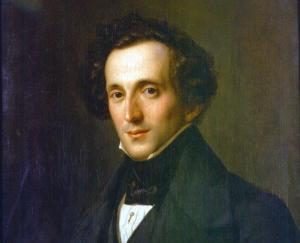
The Germany of Mendelssohn’s time comprised a number of independent states, not to be unified until 1871. Europe was turbulent with the Napoleonic Wars. In 1806, Napoleon allied the German states with France by creating the Confederation of the Rhine, forcing the Habsburg regime out of power, thus ending the Holy Roman Empire. The Confederation introduced Germans to the ideas of the French Revolution. Nobility lost privileges and commoners gained new rights and freedoms, such as representative government, land ownership, and freedom of the press and religion. During his coming of age, Mendelssohn witnessed a reform movement based on these ideas, which continued to illuminate German culture after Napoleon’s defeat in 1815. Road networks, canals, and railroads sprang up in the wake of the Industrial Revolution, and the population grew rapidly. An emerging middle class became the backbone audience for the arts. The vibrancy of 19th-century Germany contributed to Mendelssohn’s becoming a Renaissance man adept in literature (German, Greek, and Roman), philosophy, and art,2 as well as music.
His parents, Abraham and Lea Mendelssohn, held weekly musicales in their home, which drew orchestral performers from the royal court. The Mendelssohns sent their children, Felix and Fanny, to study in Berlin and Paris, where their musical abilities flourished. Fanny became an accomplished pianist and composer of nearly 500 lieder, piano works, choral pieces, and instrumental ensemble works. Felix was the first to match Mozart as a child prodigy who became a prolific composer. Mendelssohn wrote most of his string symphonies before the age of 15, along with a few concertos, a great deal of piano music, and several operas. At 17, he composed his well-known overture to A Midsummer Night’s Dream, based on Shakespeare’s play by the same name. At 20, he began a successful conducting career, both in England and in the rest of Europe. In 1843, at age 34, he founded and taught at the Leipzig Music Conservatory, which became the model for modern music conservatories and which continues to thrive today as the Felix Mendelssohn Bartholdy College of Music and Theater.
By the time he was 18, Mendelssohn had studied the music of J.S. Bach, Handel, and Mozart in depth. He chose a course to renew church music by also reviewing 16th-century masters Palestrina and Orlando di Lasso. In the debate of the time, he sided with those who believed church music should facilitate spiritual contemplation, not merely accompany church services. Mendelssohn’s compositions struck a balance between his Classical upbringing and the emerging Romanticism of his contemporaries, such as Schumann, Chopin, Liszt, Wagner, and Verdi.
Richard Wagner modeled his own career after Mendelssohn’s, even though he devoted his long life to denigrating Mendelssohn and his music in published articles. By linking Mendelssohn to Judaism despite Mendelssohn’s and his family’s Protestant conversion decades before, by disparaging “assimilated” Jews, and by characterizing Jewish culture as unpatriotic, Wagner contributed to the anti-Semitism that would prevail in Germany for decades. The Mendelssohn family’s world-historic contributions to German culture and to modern Jewry were banned, along with centuries of Jewish history, during the Nazi period. When the Nazis banned Mendelssohn’s music, German librarians sent his manuscripts and letters to Poland, from where they were dispersed throughout the world when the Nazi occupation of Poland began.
In this century, efforts have been underway to restore Mendelssohn to his rightful place in music history. Over several decades, “The Mendelssohn Project,” for example, has successfully tracked down unpublished scores and presided over performances of some of these rare gems. Mendelssohn’s subjective high standards for himself contributed to one third of his music not being published (270 of his 750 works). He revised his work relentlessly, unwilling to publish anything he did not personally deem ready.
Whether his family’s earlier conversion to Protestantism was spurred by anti-Semitism or by religious conviction or both, Mendelssohn’s father’s separation from the centuries-strong traditions of Judaism must have been wrenching. We can only surmise, from Mendelssohn’s music, that Abraham and Lea prepared their children well for navigating a difficult world. Mendelssohn intentionally transcended liturgical and denominational boundaries by studying and composing church music.
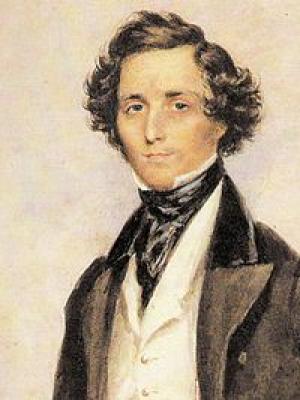 German text1. Chorale
German text1. Chorale
Mein Gott, du weißt am allerbesten
das, was mir gut und nützlich sei.
Hinweg mit allem Menschenwesen,
weg mit dem eigenen Eingebäu.
Gib, Herr, das ich auf dich nur bau,
und dir alleine ganz vertrau.
2. Chorus
Wer nur den lieben Gott läßt walten
Und hoffet auf ihn allezeit,
Den wird er wunderlich erhalten
In allem Kreuz und Traurigkeit.
Wer Gott, dem Allerhöchsten, traut,
Der hat auf keinen Sand gebaut.
3. Arie fur Soprano
Er kennt die rechten Freudesstunden,
Er weiß wohl, wenn es nützlich sei;
Wenn er uns nur hat treu erfunden
Und merket keine Heuchelei,
So kömmt Gott,
eh wir uns versehn,
Und lässet uns viel Guts geschehn.
4. Chorale
Sing, bet und geh auf Gottes Wegen,
Verricht das Deine nur getreu
Und trau des Himmels reichem Segen,
So wird er bei dir werden neu;
Denn welcher seine Zuversicht
Auf Gott setzt, den verläßt er nicht.
English text
1. Chorale
My God, You know best of all
what is good and useful for me.
Away with all human existence,
away with all that humanity constructs.
Grant, Lord, that I rely on You alone,
and that I put my trust entirely in You.
2. Chorus
Who only lets dear God rule
and hopes in Him at all times,
God will wondrously support
in every torment and sorrow.
Whoever trusts in God, the Almighty,
has not built upon sand.
3. Aria for Soprano Solo
He knows the right time of joy,
He knows well, when it is necessary;
If only He has found us faithful
and detects no hypocrisy,
then God comes,
before we are aware of Him,
and allows much good to befall us.
4. Chorale
Sing, pray and walk in God’s ways,
just carry out your ways faithfully
and trust in heaven’s rich blessing,
then it will be renewed in you;
for whoever places his confidence
in God, God will never abandon.
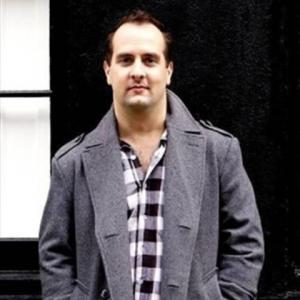 I. ThrenodyWhen death takes off the mask, [we] will know one another,
I. ThrenodyWhen death takes off the mask, [we] will know one another,Though diverse liveries [we] wear here make [us] strangers.
Text by William Penn (1644–1718), from Some Fruits of Solitude In Reflections and Maxims (1682)
Tremblest thou when my face appears To thee?
Wherefore thy dreadful fears?
Be easy, friend; ’tis thy truest gain
To be far away from the sons of men.
I offer a couch to give thee ease:
Shall dreamless slumber so much displease?
Text by Muhammad Rajab Al-Bayoumi (dates unknown), from Death Speaks, translated by Arthur J. Arberry (1950)
To see a World in a Grain of Sand,
And a Heaven in a Wild Flower,
Hold Infinity in the palm of your hand,
And Eternity in an hour.
Text by William Blake (1757–1827), from Auguries of Innocence (1808)
Behold, how good and how pleasant it is
for [people] to dwell together in unity.
Text from Psalm 133, from the Bible (King James Version, 1611)
II. As We Remember Them
In the rising of the sun and at its going down,
we remember them.
In the blowing of the wind and in the chill of winter,
we remember them.
In the opening buds and in the rebirth of spring,
we remember them.
In the blueness of the sky and in the warmth of summer,
we remember them.
In the rustling of the leaves and in the beauty of autumn,
we remember them.
When [we’re] weary and in need strength,
we remember them.
When [we’re] lost and sick at heart,
we remember them.
So long as we live, they too shall live, for they are part of us,
As we remember them.
Text by Roland B. Gittelsohn (1910–1995), adapted from The Gates of Repentance
And the Heav’nly Quire stood mute,
And silence was in Heav’n.
Text by John Milton (1608–1684), from Paradise Lost, Book III (1667)
III. From Heaven Distilled A Clemency
Each shall arise in the place where their life [spirit] departs.
“Bundahis- Bahman yast”; Indian Bundahishn (ninth century), adapted from Sacred Book of the East, Volume 5, translated by Edward W. West (1860)
[So] Why then should I be afraid? I shall die once again to rise an angel blest.“Masnavi i ma’navi”; Mathwani of Jalalu’d’Din Rumi (13th century), adapted from Masnavi i Ma’navi, Book III, translated by Edward H. Whinfield (1898)
Our birth is but a sleep and a forgetting
The Soul that rises with us, our life’s Star,
Hath had elsewhere its setting. And cometh from afar.
Text by William Wordsworth (1770–1850), from Ode: Intimations of Immortality (1807)
Calm fell. From heaven distilled a clemency; There was peace on earth, and silence in the sky.
Text by Thomas Hardy (1840–1928), from And There Was a Great Calm on the signing of the Armistice (1918)

